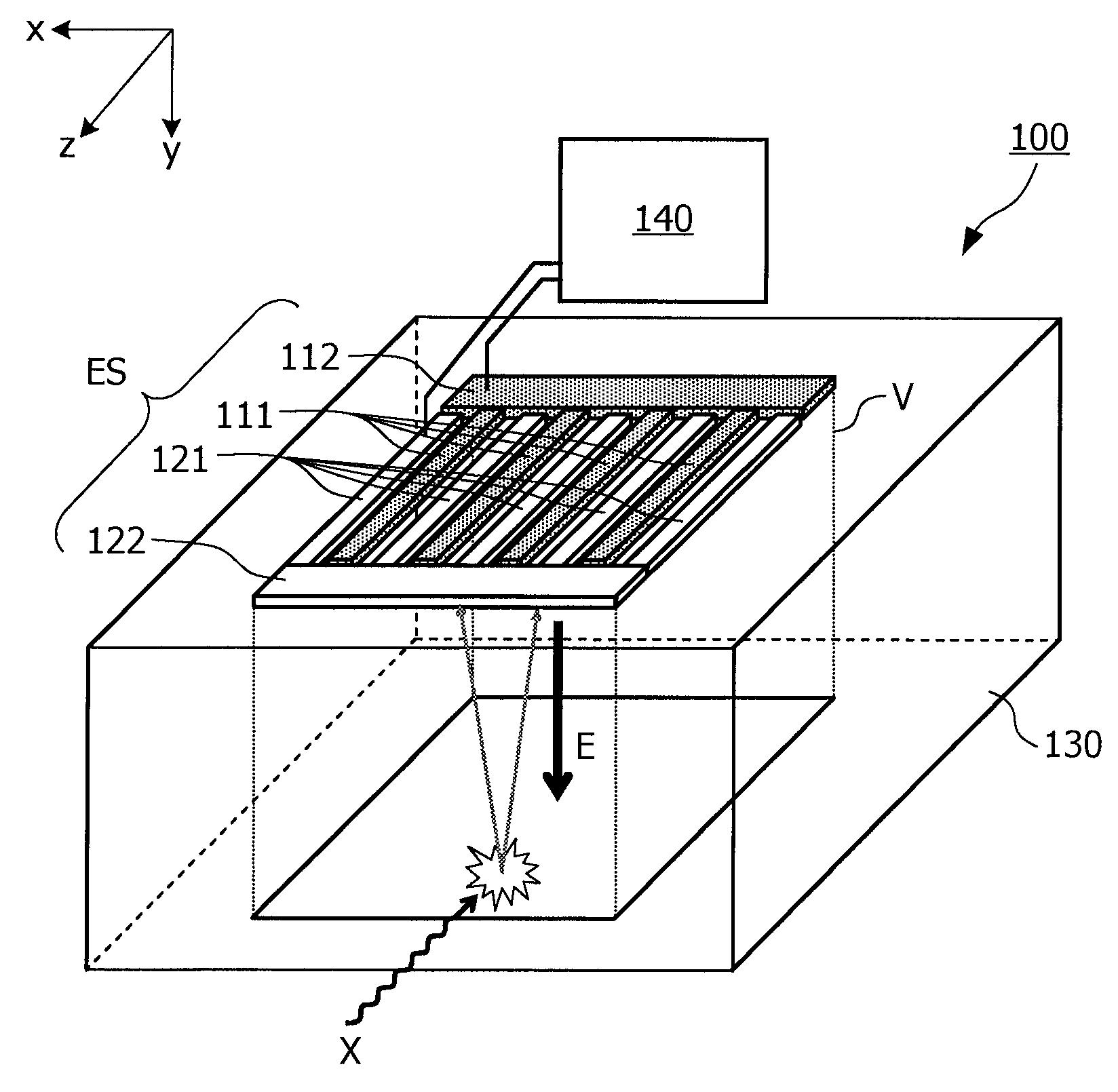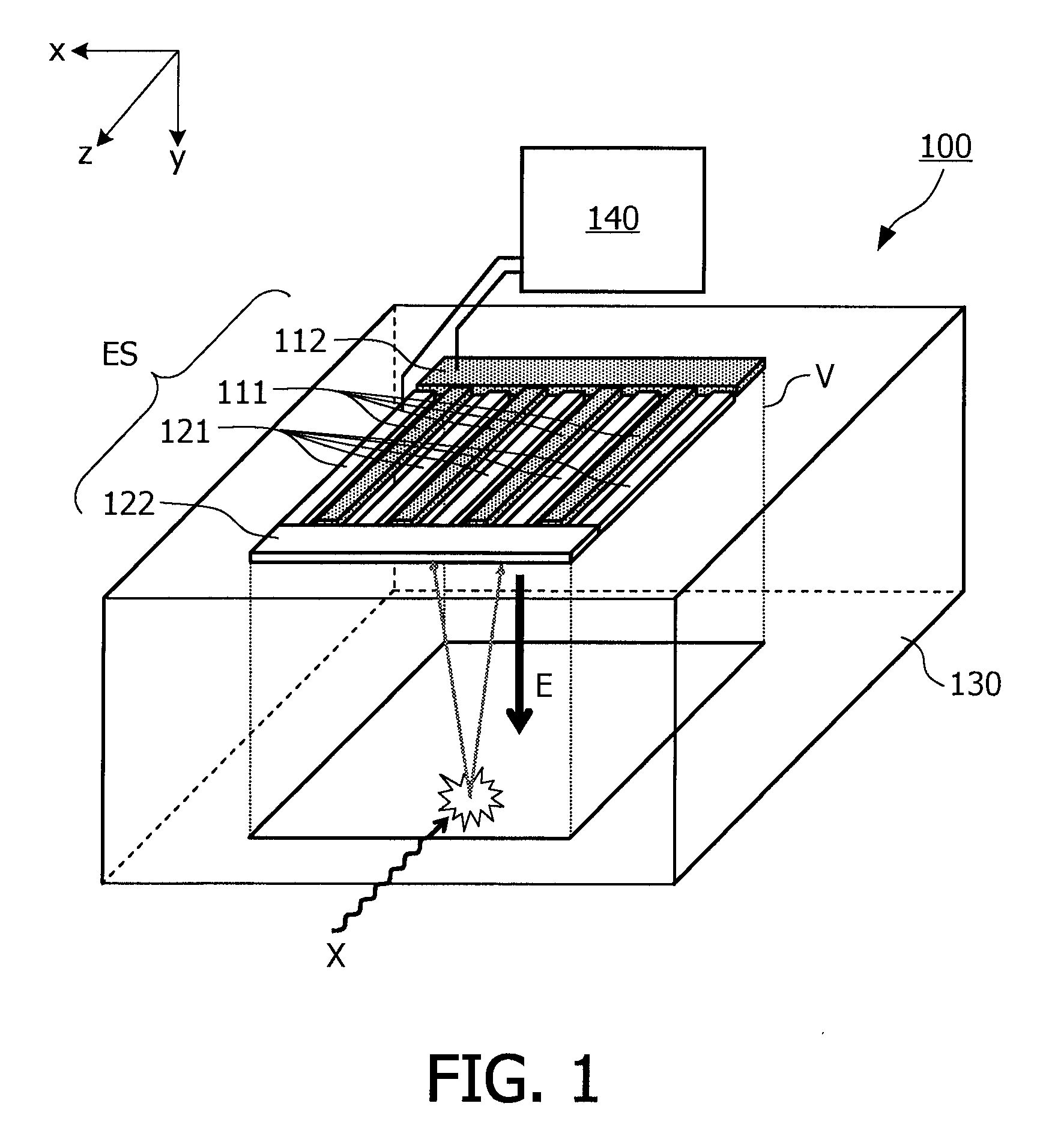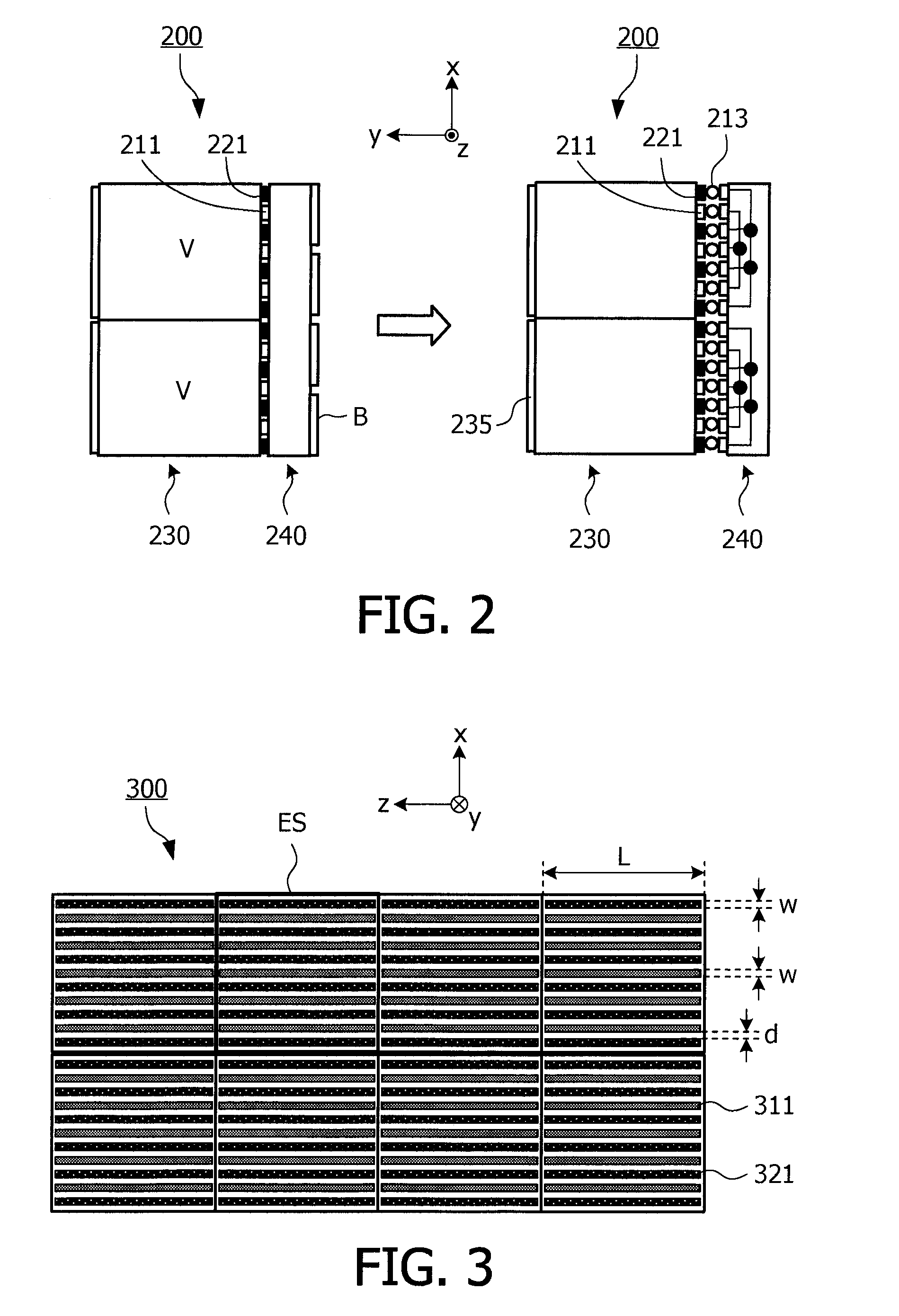Radiation detector with a plurality of electrode systems
- Summary
- Abstract
- Description
- Claims
- Application Information
AI Technical Summary
Benefits of technology
Problems solved by technology
Method used
Image
Examples
Embodiment Construction
[0047]One trend in modern X-ray imaging systems is the exploitation of spectral information inherently available due to the fact that an X-ray tube emits a polychromatic X-ray spectrum. In the long run, spectral information will become available by energy-resolving photon-counting detectors based on a direct conversion material (e.g. Cd[Zn]Te). Hence, K-edge imaging will be enabled, which is considered to be the most valuable clinical add-on of a CT system with evaluation of spectral information. K-edge imaging will enable important applications like colorectal cleansing (“electronic stool removal”) and provide highly improved separation between calcified plaques and the contrast-agent filled vessel.
[0048]Essential for the success of a photon counting detector is a good spectral resolution, which can be degraded by mainly two effects. First, charge sharing between neighbored pixels can trigger a count in each pixel with a shared signal. Without expensive and slow coincidence electro...
PUM
 Login to View More
Login to View More Abstract
Description
Claims
Application Information
 Login to View More
Login to View More - R&D
- Intellectual Property
- Life Sciences
- Materials
- Tech Scout
- Unparalleled Data Quality
- Higher Quality Content
- 60% Fewer Hallucinations
Browse by: Latest US Patents, China's latest patents, Technical Efficacy Thesaurus, Application Domain, Technology Topic, Popular Technical Reports.
© 2025 PatSnap. All rights reserved.Legal|Privacy policy|Modern Slavery Act Transparency Statement|Sitemap|About US| Contact US: help@patsnap.com



